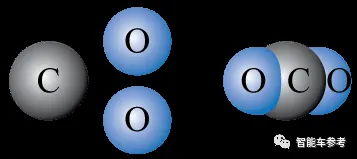Lithium-ion batteries are notorious for their frequent internal short circuits, which can ignite the battery's liquid electrolyte and cause the battery to explode and thus start a fire. Recently, engineers at the University of Illinois have developed a polymer-based solid electrolyte that is self-healing after damage and can also be recycled without the use of harsh chemicals or high temperatures. This new research, which could help manufacturers produce recyclable, self-healing commercial batteries, was published in the Journal of the American Chemical Society.
As lithium-ion batteries go through multiple charging and discharging cycles, they form tiny dendrites of solid lithium called dendritic crystals, the researchers said. These structures can shorten battery life, cause hot spots and short circuits, and sometimes become large enough to puncture the battery's internal components, leading to explosive chemical reactions between the electrodes and the electrolyte.
Chemists and engineers have been pushing to replace the liquid electrolyte in lithium-ion batteries with solid materials such as ceramics or polymers. However, most of these materials are rigid and fragile, leading to poor contact between the electrolyte and the electrodes as well as reduced conductivity.
Brian Jing, co-author of the paper, said, "Solid ion-conducting polymers are an option for developing non-liquid electrolytes. However, the high temperature conditions inside the cell can melt most polymers, which again leads to dendrites and failures."
Past research has produced solid electrolytes by using a network of polymer chains crosslinked to form a rubbery lithium conductor, and while this method delays the growth of dendritic crystals, these materials are complex and cannot be recycled or repaired when damaged.
To solve this problem, the researchers developed a networked polymer electrolyte in which cross-linking points can undergo exchange reactions and exchange polymer chains. Compared to linear polymers, these networks actually harden when heated, which minimizes the problem of dendrites, the researchers say. In addition, they readily break down and re-solidify into a network structure when damaged, making them recyclable and restoring electrical conductivity after damage due to their self-healing properties.
"This new network polymer also shows the remarkable property that both conductivity and stiffness increase with heating, which is not the case with conventional polymer electrolytes," Jing said.
Christopher Evans, professor of materials science and engineering and first author of the paper, said, "Most polymers require strong acids and high temperatures to break down. Our material, on the other hand, is soluble in water at room temperature, making it a very energy-efficient and environmentally friendly process."
The team explored the new material's electrical conductivity and discovered its potential as an effective battery electrolyte, but they acknowledged that it will take some time before it is comparable to the batteries currently in use.
Evans said, "I think this work provides an interesting test bed for others, we use a very specific chemical and a very specific dynamic bond in the polymer, but we think that this platform can be reconfigured so that it can be used with a lot of other chemicals to be able to tune the conductivity and the mechanical properties. "
(Source: OFweek Lithium Network)
[Zhongshun New Energy Marketing Department November 7, 2020 Responsibility: Xiao Zheng]
* Reproduced for the purpose of transmitting more information, and does not mean that we endorse its views and are responsible for its authenticity.




